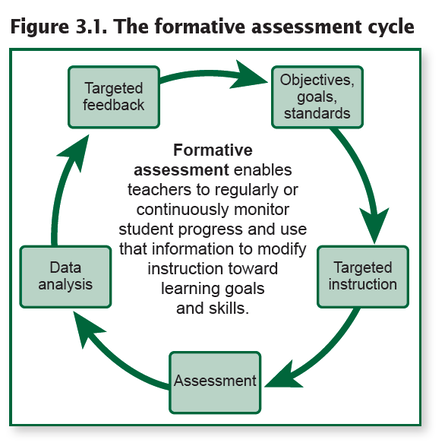Understanding the intricacies of how we read is fundamental to fostering literacy. The Science of Reading (SoR) is a comprehensive body of research that delves into the cognitive processes involved in reading, offering valuable insights into effective teaching strategies. By exploring these core principles, we aim to equip leaders with the knowledge to support and enhance reading instruction, ensuring that every student has the opportunity to become a proficient reader.
1. Reading is hard.
Decades of research make it clear. Humans are not hard-wired for reading, but rather for processing spoken language. This means the brain must be trained to connect to our visual system with our spoken language system. With many regions of the brain completing individual and connected functions, one can understand why reading is hard (Burns, 2017).
2. Teachers must use direct, explicit, and systematic instruction.
To train the brain and strengthen neural pathways used for reading, teachers must use direct, explicit, and systematic instruction.
Direct Instruction
The teacher defines and teaches a concept, models the learning process, guides students through its application, and arranges for extended guided practice until mastery is achieved.
Explicit Instruction
Explicit teaching means that nothing is left to chance. It involves direct, clear explanations of learning targets and concepts. The teacher’s language is concise, specific, and related to the objective. Instruction includes a high level of interaction and modeling of skills.
Systematic Instruction
The plan for systematic instruction is carefully thought out, builds upon prior learning, and is strategic building from simple to complex. It is designed before activities and lessons are planned. Instruction is across the five components (phonemic awareness, phonics, fluency, vocabulary, and comprehension).
3. Decoding is part of the equation.
Successful reading comprehension depends on both strong decoding skills and strong language comprehension abilities. Gough and Tunmer (1986) introduced The Simple View of Reading to clarify decoding’s role in education.
The Simple View formula shows that a student’s reading comprehension (RC) score can be anticipated using their decoding (D) skills and language comprehension (LC) abilities. When students can decode expertly, their reading comprehension capabilities equal their language comprehension abilities.
| Decoding x Language Comprehension = Reading Comprehension |
4. If one strand is weak, it affects the whole rope.
Scarborough’s Reading Rope, introduced by Dr. Hollis Scarborough in the 90’s, also illustrates the diverse skills necessary for children to become skilled readers.

The Reading Rope contains two main sections: word recognition and language comprehension. Woven together, these strands become the rope that represents complete skilled reading.
5. Assessment must inform instruction and intervention.

Literacy assessment data can help teachers, families, and students better understand strengths, interests, and needs as they relate to skills such as decoding, fluency, comprehension, vocabulary, and writing. Educators should conduct thorough assessments to identify students’ specific strengths and weaknesses in wrod recognition and language comprehension (Reading Rockets, n.d.) Data from literacy assessment should be used to differentiate literacy instruction (Shelley, 2022).
Incorporating the Science of Reading into educational practices is not just about improving literacy rates; it’s about transforming how we understand and teach reading. By recognizing the complexity of reading, embracing explicit instruction, understanding the critical role of decoding, appreciating the interconnected nature of reading skills, and using assessments to inform instruction, educational leaders can make informed decisions that profoundly impact student outcomes. Let’s commit to applying these insights, fostering a culture of reading excellence, and ultimately empowering every student to succeed.
About the Author

Keely Keller is the Director of Professional Programs for Teaching Channel in Eagan, Minnesota. She holds a Bachelor of Science in Special Education from St. Cloud State University, a Master’s of Arts in Education from Hamline University, and additional Director of Special Education and Principal Licensures from the University of Minnesota. Before joining Teaching Channel, Keely served students with special needs as a teacher and Special Education Coordinator in a suburban Minnesota school district. Keely has years of experience working with new teachers.
Fun fact: Keely loves to go camping in her travel trailer with family and friends.
Resources
Access Center. (n.d.). Differentiated Instruction for Reading. Reading Rockets. Retrieved December 20,
2023, from https://www.readingrockets.org/topics/differentiated-instruction/articles/differentiated-instruction-reading
Burns, M. (2017, December 6). The Reading Brain: How Your Brain Helps You Read, and Why it Matters.
Scientific Learning. https://www.scilearn.com/the-reading-brain/
Colorado Department of Education. (n.d.). Elements Comprising the Colorado Literacy Framework.
Colorado Department of Education. Retrieved January 25, 2024, from
https://www.cde.state.co.us/coloradoliteracy/clf/eightelements_04-purposefulinstruction
Farrell, L. (2023). The Simple View of Reading. Reading Rockets. Retrieved December 20, 2023, from
https://www.readingrockets.org/topics/about-reading/articles/simple-view-reading
National Reading Panel – Teaching Children to Read: An Evidence-Based Assessment of the Scientific
Research Literature on Reading. (2000). National Institute of Child Health and Human Development.
https://www.nichd.nih.gov/sites/default/files/publications/pubs/nrp/Documents/report.pdf
Scarborough’s Reading Rope. (n.d.). Really Great Reading. Retrieved December 20, 2023, from
https://www.reallygreatreading.com/content/scarboroughs-reading-rope
Staake, J., & Barrett, L. (n.d.). What Is Scarborough’s Reading Rope and How Do Teachers Use It? We
Are Teachers. Retrieved November 7, 2023, from https://www.weareteachers.com/scarboroughs-rope/
Reading Rockets. (n.d.).
Assessment: In Depth. Reading Rockets. Retrieved December 20, 2023, from
https://www.readingrockets.org/reading-101/reading-101-learning-modules/course-modules/assessmen
t/depth
Shelley, A. (2022). REL Blog | Strategies for using data to deliver differentiated reading instruction to
students in early grades. Institute of Education Sciences. Retrieved December 20, 2023, from
https://ies.ed.gov/ncee/rel/Products/Region/midwest/Blog/102922







